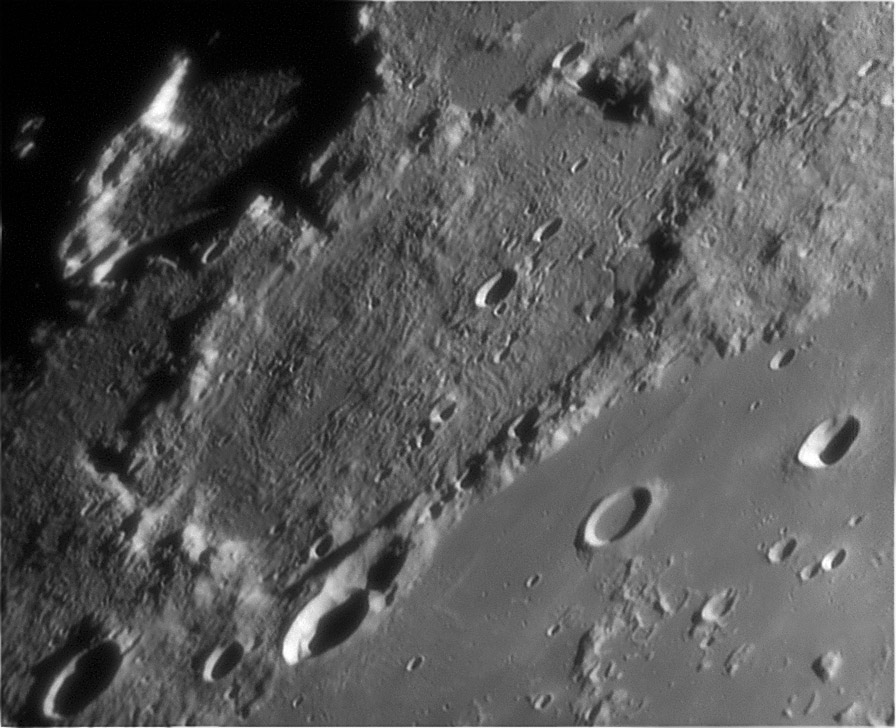
Image by Wes Higgins
Nomally, J. Herschel is seen as having a slightly lumpy floor, but in Wes’ new image the floor is revealed to be covered with a textured roughness. Wiggley parallel troughs pattern the surface like fingers dragged through sand. Since J. Herschel is just north of the Imbrium impact basin the best interpretation is that the material on the floor is a deposit of Imbrium ejecta. The image suggests that when the ejecta arrived - either ballistically or by moving across the surface - it did not just splot to a stop but apparently swirled around, oozing across the surface. Similar slosh marks are seen in Lunar Orbiter images around the Orientale basin, but are hard to see by terrestrial observers. Do you notice the short sinuous rille on the right side of the floor? There is also a pyroclastic (volcanic ash) mantling at this end of J. Herschel. The rille clearly cuts through the Imbrium ejecta deposit so the volcanism occurred afterwards, perhaps during the volcanic episode that emplaced the Mare Frigoris lavas. What a great image, and what an interesting story.
Technical Details:
18″ Reflector, Infinity 2-1M camera, 20fps, MAP processing, stack of 64 frames. The Moon was only 35 degrees in altitude.
Related Links:
Rükl plate 2
Wes’ website
Yesterday's LPOD: Primaries or Secondaries?
Tomorrow's LPOD: Not a Crater?
COMMENTS?
Register, Log in, and join in the comments.



